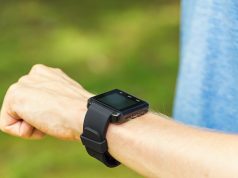Sensor data collected during fear induction task are analyzed using machine learning
TUESDAY, Jan. 22, 2019 (HealthDay News) — Wearable sensor data extracted from a fear induction task paired with machine learning can accurately identify young children with internalizing diagnosis, according to a study published online Jan. 16 in PLOS ONE.
Ryan S. McGinnis, Ph.D., from the University of Vermont in Burlington, and colleagues presented a new approach for identifying children with internalizing disorders using a 90-second mood induction task. During the task, participant motion was monitored using a commercially available wearable sensor.
The researchers found that children with an internalizing diagnosis could be differentiated from controls with 81 percent accuracy (67 percent sensitivity and 88 percent specificity) using machine learning. Affected children exhibited significantly more avoidance of ambiguous threats in kinematical measures. Compared with this approach, accuracy was slightly lower (0.68 to 0.75 versus 0.81), specificity was slightly higher (0.88 to 1.00 versus 0.88), and sensitivity was lower (0.00 to 0.42 versus 0.67) for differentiating children with an internalizing diagnosis from controls with clinical thresholds on parent-reported child symptoms.
“This new approach reduces the time required for diagnostic screening while also establishing high sensitivity — which can help to reduce barriers and better alert families to the need for child mental health services,” the authors write.
Copyright © 2019 HealthDay. All rights reserved.








